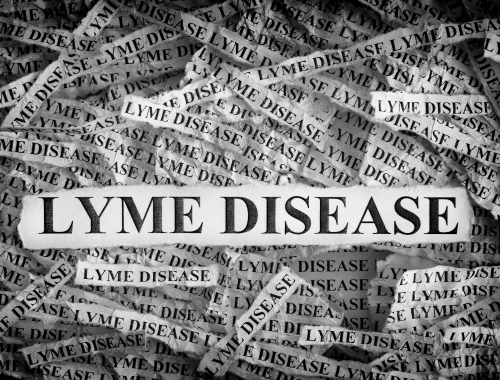Difference Between Bell’s Palsy and Lyme Disease
Bell’s palsy is a neuromuscular condition related to a problem with the facial nerve. Lyme disease is a bacterial infection transmitted by ticks.

What is Bell’s palsy?
Definition:
Bell’s palsy is a condition where part of the face droops because of dysfunction of the facial nerve. This affects only one side of the face causing symptoms of partial facial weakness and paralysis.
Causes and prevention:
Several viruses can result in Bell’s palsy developing. Examples of viruses that can cause the condition include Herpes simplex, Herpes zoster, cytomegalovirus, and Epstein-Barr virus. It is difficult to prevent getting Bell’s palsy since it is due to several viruses and bacteria.
Symptoms and complications:
People with Bell’s palsy often feel pain in the part of the head that is located directly behind the ear. One side of the face also becomes weak and droops as it becomes paralyzed. The eye on the same side of the face may also be hard to open or close and may tear up. Nerve damage and blindness my result as complications of the condition.
Diagnosis:
Bell’s palsy is diagnosed by a physical exam, noting of the symptoms, and excluding other possible conditions by imaging tests.
Treatment:
Bell’s palsy is treated using a course of oral prednisone. This is a type of corticosteroid that is administered for about a week. Eye drops are also useful for placing in the affected eye. An eye patch can be used to cover the eye so that it does not dry out since it may be hard to open or close properly.

What is a Lyme disease?
Definition:
Lyme disease is an illness caused by being bitten by ticks infected with a type of spirochaete bacteria.
Causes and prevention:
The cause of Lyme disease is the bacteria known as Borrelia burgdorferi. This is a bacterium that is in the spirochaete group of bacteria. People are infected by Borrelia when bitten by a tick carrying this bacterium. To some extent you can prevent getting infected by keeping away from areas of long grass that harbor the ticks that carry the bacteria.
Symptoms and complications:
Symptoms of Lyme disease include having a red skin rash that is in a bull’s eye pattern. Other signs include having a fever, sore and inflamed joints (arthralgia), and exhaustion. The condition can also lead to some facial paralysis after a week or two.
Diagnosis:
The physical signs, especially the presence of the rash suggest Lyme disease. Diagnosis of Lyme disease is confirmed by blood tests that look for IgG and IgM antibodies.
Treatment:
Treatment involves using anti-inflammatories to help with the pain and antibiotics, which target the bacteria. The antibiotics usually used to treat Lyme disease are amoxicillin and doxycycline. Intravenous immunoglobulin can also be used to help treat people with nerve damage due to Lyme disease
Difference between Bell’s palsy and Lyme disease?
Definition
Bell’s palsy is a condition where the facial nerve is damaged. Lyme disease is an illness caused by tick-transmitted bacteria.
Causative organism(s)
Bell’s palsy can be due to several viruses, including Herpes, cytomegalovirus, and Epstein-Barr virus, and it can result from the bacteria that causes Lyme disease. Lyme Disease is caused by Borrelia burgdorferi bacteria.
Symptoms
The symptoms of Bell’s palsy include a drooping face on one side, pain behind the ear, an eye that tears up and will not easily open and close. The symptoms of Lyme disease include a rash that looks like a bull’s eye, sore joints, fever, fatigue, and facial palsy.
Complications
Bell’s palsy can result in nerve damage and a blind eye (on the affected side of the face). Lyme disease can result in heart arrhythmia and brain inflammation.
Treatment
Eye drops and oral prednisone can be used to treat Bell’s palsy. Antibiotics, such as amoxicillin and doxycycline along with intravenous immunoglobulin, and anti-inflammatories are used to treat Lyme disease.
Table comparing Bell’s palsy and Lyme disease

Summary of Bell’s palsy Vs. Lyme disease
- Bell’s palsy and Lyme disease can both cause some facial paralysis.
- Lyme disease is caused by a spirochaete bacterium called Borrelia burgdorferi.
- Bell’s palsy can be a result of a viral infection or due to Lyme disease.
FAQ
Is Bell’s palsy related to Lyme disease?
Lyme disease can sometimes cause Bell’s palsy because the bacteria can damage the nerves in the face resulting in the symptoms of facial palsy.
What can be mistaken for Bell’s palsy?
There are a couple of conditions that can be confused with Bell’s palsy. A stroke, Ramsay-Hunt syndrome, Lyme disease, and ear infections can potentially mimic Bell’s palsy.
Why does Lyme cause facial palsy?
The bacteria that cause Lyme disease can damage nerves, including those of the face, resulting in facial palsy.
Does facial paralysis from Lyme disease go away?
The facial paralysis can go away if you are treated with antibiotics.
How long does it take to get Bell’s palsy from Lyme disease?
The condition can occur 1 to 3 weeks after infection with the Borrelia bacterium that causes Lyme disease.
Can nerve damage from Lyme disease be reversed?
Treatment with intravenous immunoglobulin can help to reverse any nerve damage caused by Lyme disease.
- Difference Between Rumination and Regurgitation - June 13, 2024
- Difference Between Pyelectasis and Hydronephrosis - June 4, 2024
- Difference Between Cellulitis and Erysipelas - June 1, 2024
Search DifferenceBetween.net :
Leave a Response
References :
[0]Bush, Larry M. and Maria T. Vazquez-Pertejo. “Lyme disease”. Merckmanuals. Merck & Co., 2022, https://www.msdmanuals.com/professional/infectious-diseases/spirochetes/lyme-disease
[1]Rubin, Michael. “Facial Nerve Palsy (Bells Palsy; Bell’s Palsy)”. Merckmanuals. Merck & Co., 2022, https://www.msdmanuals.com/professional/neurologic-disorders/neuro-ophthalmologic-and-cranial-nerve-disorders/facial-nerve-palsy
[2]Tiemstra, Jeffrey D., and Nandini Khatkhate. "Bell's palsy: diagnosis and management." American family physician 76.7 (2007): 997-1002.
